1854
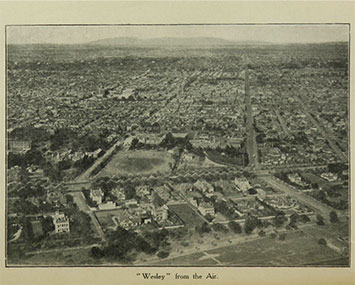
Methodists, encouraged by a government grant and gift of a suitable site, began work to establish a school on St Kilda Road.
This early aerial image looks east and shows the Front Turf extending along Moubray Street to the tree-lined boulevard of St Kilda Road. In the foreground, mansions from the 1870s and 1880s occupy the territory between St Kilda Road and peaceful Queens Road, with a glimpse of the Albert Park boatshed and lake in the bottom right corner. The Prep School on Punt Road can just be seen on the Back Turf, and Mercer Street and cottages where the chapel was later built.
Apart from tennis courts, Wesley does not yet occupy the territory extending to High Street. The large buildings in the middle distance mark the Chapel Street shopping precinct. High Street, with its electric trams, extends east towards Armadale and Malvern. Institutions for the ill, blind, aged and deaf are near neighbours of the College.
La Trobe Picture Collection, State Library of Victoria
Sir Charles Darling, Governor of Victoria, laid the foundation stone of Wesley College on 4 January 1865.
1866
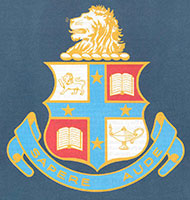
‘Sapere Aude’
In 1866 the College motto was confirmed as Sapere Aude (from Horace, Ep. I. ii 40) – translated as ‘dare to be wise’. The school colours, purple and gold, were also adopted. Between 1876 and 1901, the school colours were changed to light blue and white – colours still incorporated in the school crest. The use of blue and white continued until 1902 when the purple and gold scheme was reinstated.
Founders of the College
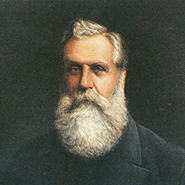 Rev James S Waugh served as first President of the College Council from 1866 to 1884. He lived onsite and played an active role in the administration and life of the College. A great benefactor, Rev Waugh is remembered in the naming of the Council meeting room and in a fine portrait by Frank Goldstraw, fifth Headmaster of Wesley College.
Rev James S Waugh served as first President of the College Council from 1866 to 1884. He lived onsite and played an active role in the administration and life of the College. A great benefactor, Rev Waugh is remembered in the naming of the Council meeting room and in a fine portrait by Frank Goldstraw, fifth Headmaster of Wesley College.
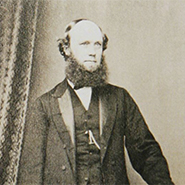 Dr James Corrigan served as the first Headmaster of Wesley College from 1866 to 1871. Much admired, he died in office in 1871.
Dr James Corrigan served as the first Headmaster of Wesley College from 1866 to 1871. Much admired, he died in office in 1871.
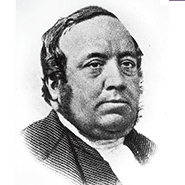 Rev Daniel Draper was one of the driving forces in the foundation of Wesley College. Rev Draper and his wife perished on the same day the College opened , when the SS London sank en route to Melbourne.
Rev Daniel Draper was one of the driving forces in the foundation of Wesley College. Rev Draper and his wife perished on the same day the College opened , when the SS London sank en route to Melbourne.
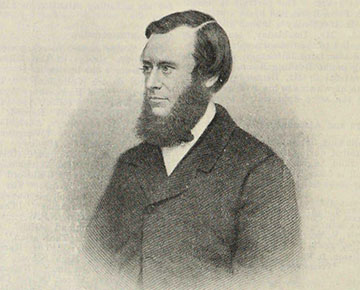
Walter Powell
Walter Powell was a successful businessman and philanthropist. In 1865 he added to his already generous benefaction with a gift of ₤1,000 to the College. He is recognised in many ways at Wesley, most notably with the annual Walter Powell Scholarship award.
Cadet Corps
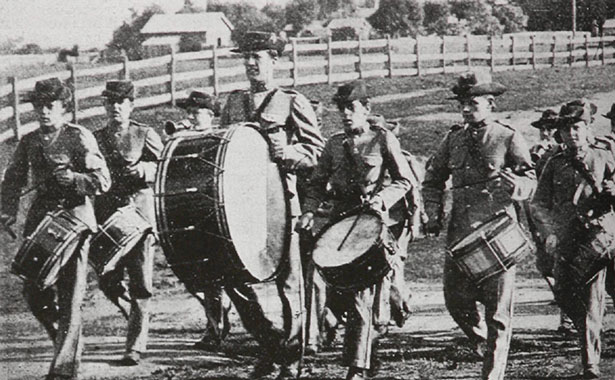
The Cadets Corps was established in 1867.
HRH the Duke of Edinburgh visited Victoria and, on the suggestion of Frederick Sargood, a cadet corps was formed at the school to welcome the Duke. The Wesley Cadet Corps operated until 1975.
1869

The earliest known photograph of Wesley College, taken in December 1869, shows the College in splendid isolation. The adult figure centre left is thought to be Rev James Waugh with Dr James Corrigan centre right. The boys at left pose at playing cricket.
Sport
Sport has always been an important part of College life. The Victorian emphasis on a healthy mind in a healthy body was encapsulated by extraordinary athlete LH Kelly (pictured right). Kelly served in the First World War before returning to Wesley College as a master.
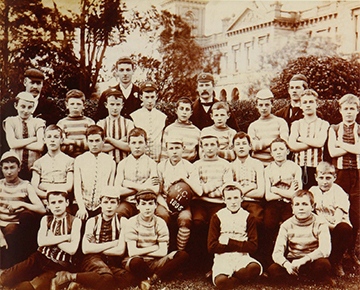
Wesley College made its first appearance in Public School
Football in a game with Melbourne Grammar School in 1869.
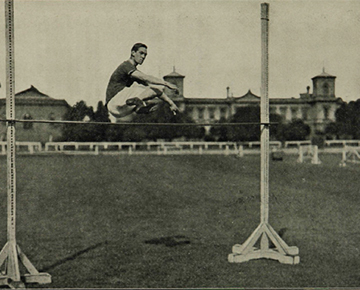
The first Wesley College sports meeting was held in 1869 under the title ‘Athletic Games’.
1870 - 1890
In 1870, Wesley College boasted 207 pupils, 62 of whom were boarders.
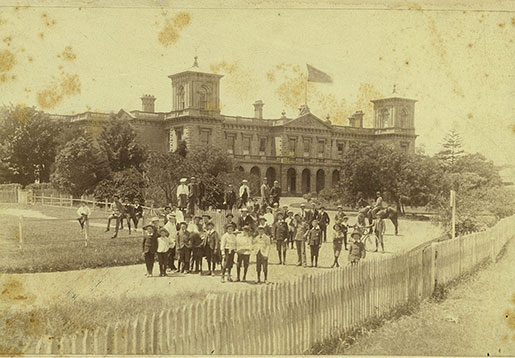
Early 1870s image of Wesley boys in front of the College.
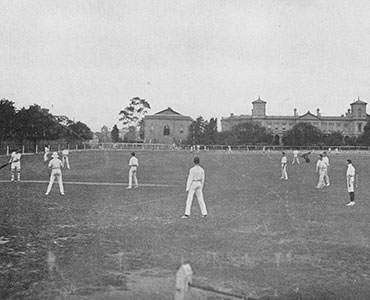
Wesley’s players competed for the first time in Public
School Cricket.
1871
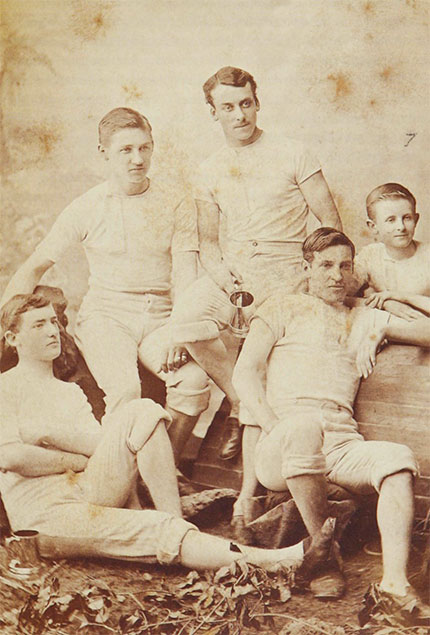 Wesley crews rowed for the first time in Public School Rowing, winning Second Crew. From left, Stephens (stroke), Tatchell (3), Permewan (2) and G. Stewart (bow) with cox J. Hester.
Wesley crews rowed for the first time in Public School Rowing, winning Second Crew. From left, Stephens (stroke), Tatchell (3), Permewan (2) and G. Stewart (bow) with cox J. Hester.
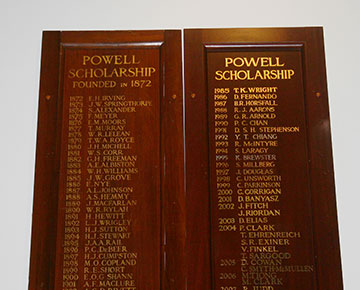
Walter Powell Scholarship
The Walter Powell Scholarship was inaugurated.
Anne Powell (wife of Walter Powell, one of the College founders) donated ₤1,000 for the funding of two scholarships – the Walter Powell Scholarships. An absolute condition was that the successful competitors must be matriculated students and proceed with their undergraduate course at university. The scholarship continues to be awarded annually.
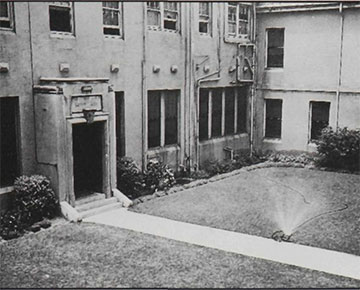
Nye Quadrangle
Extensions were added to the College to create what is now the Nye Quadrangle, named in honour of Rev Edward Nye.
The new building became the College Dining Room, now the Cato Room.
1874
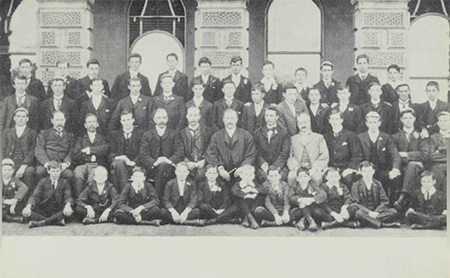
1874 was a record year for enrolments that would hold until 1905, with enrolments reaching 271, 59 of whom were boarders.
